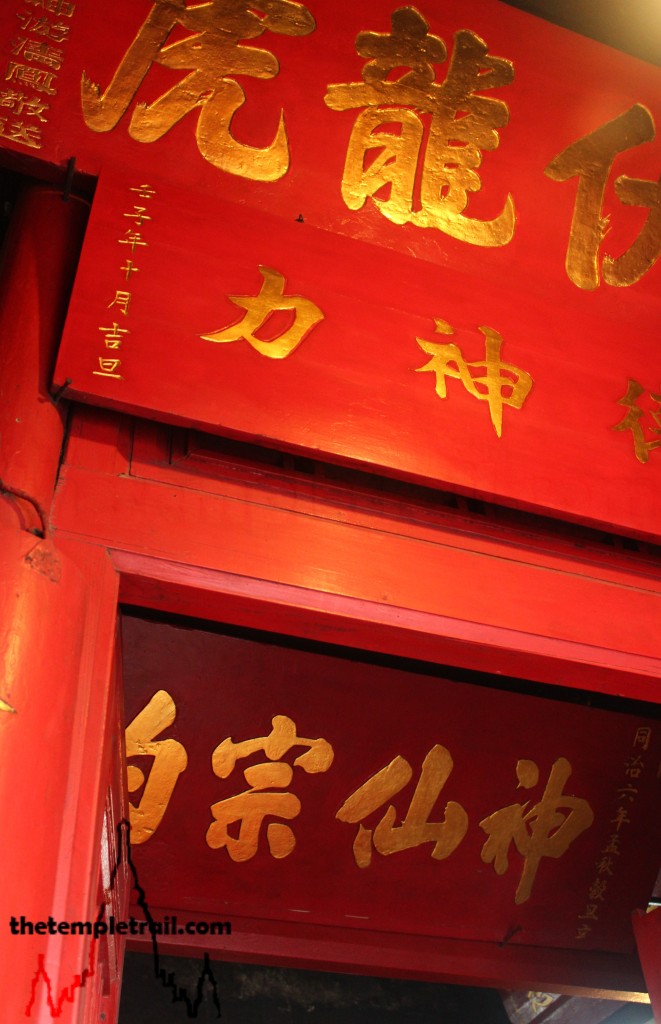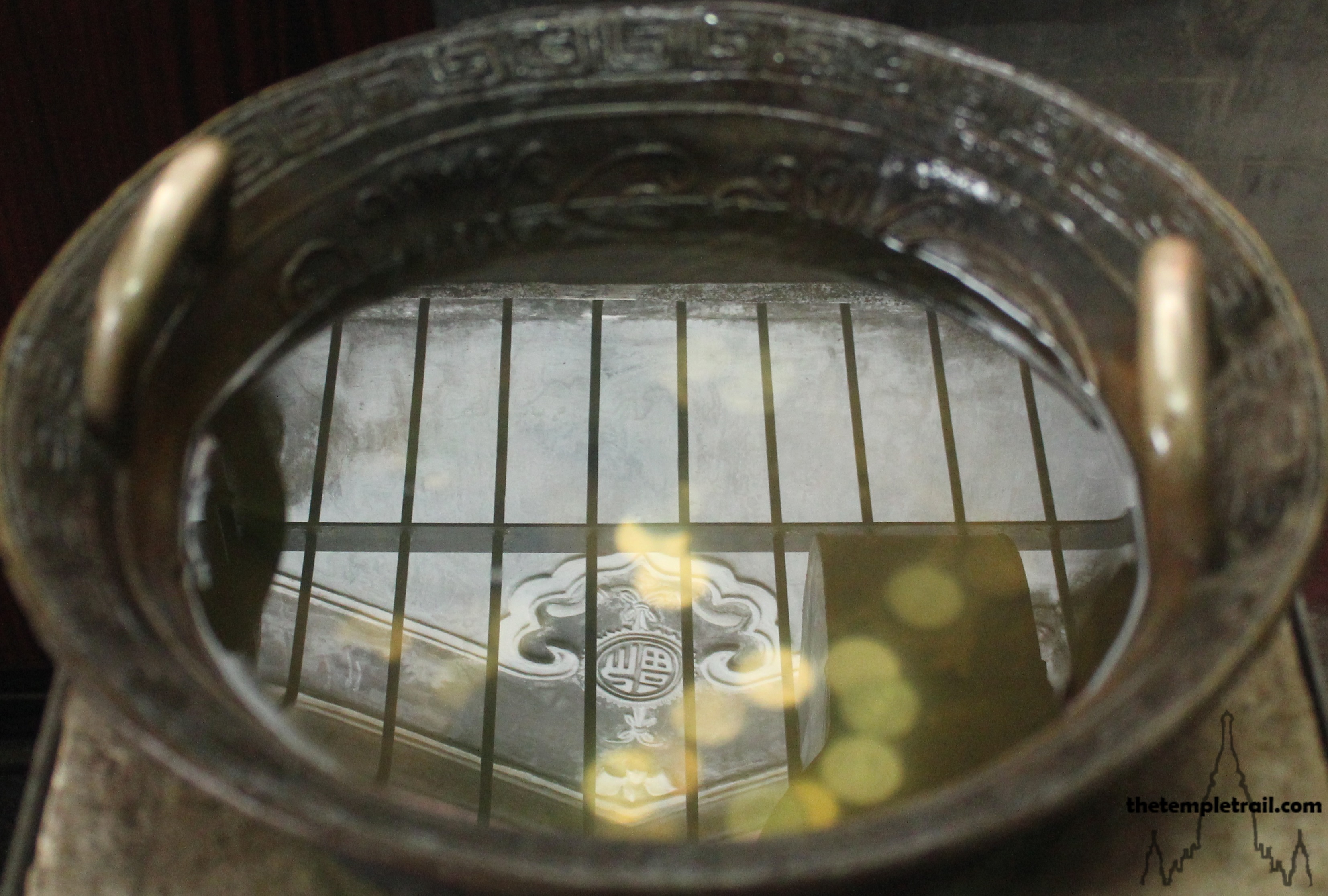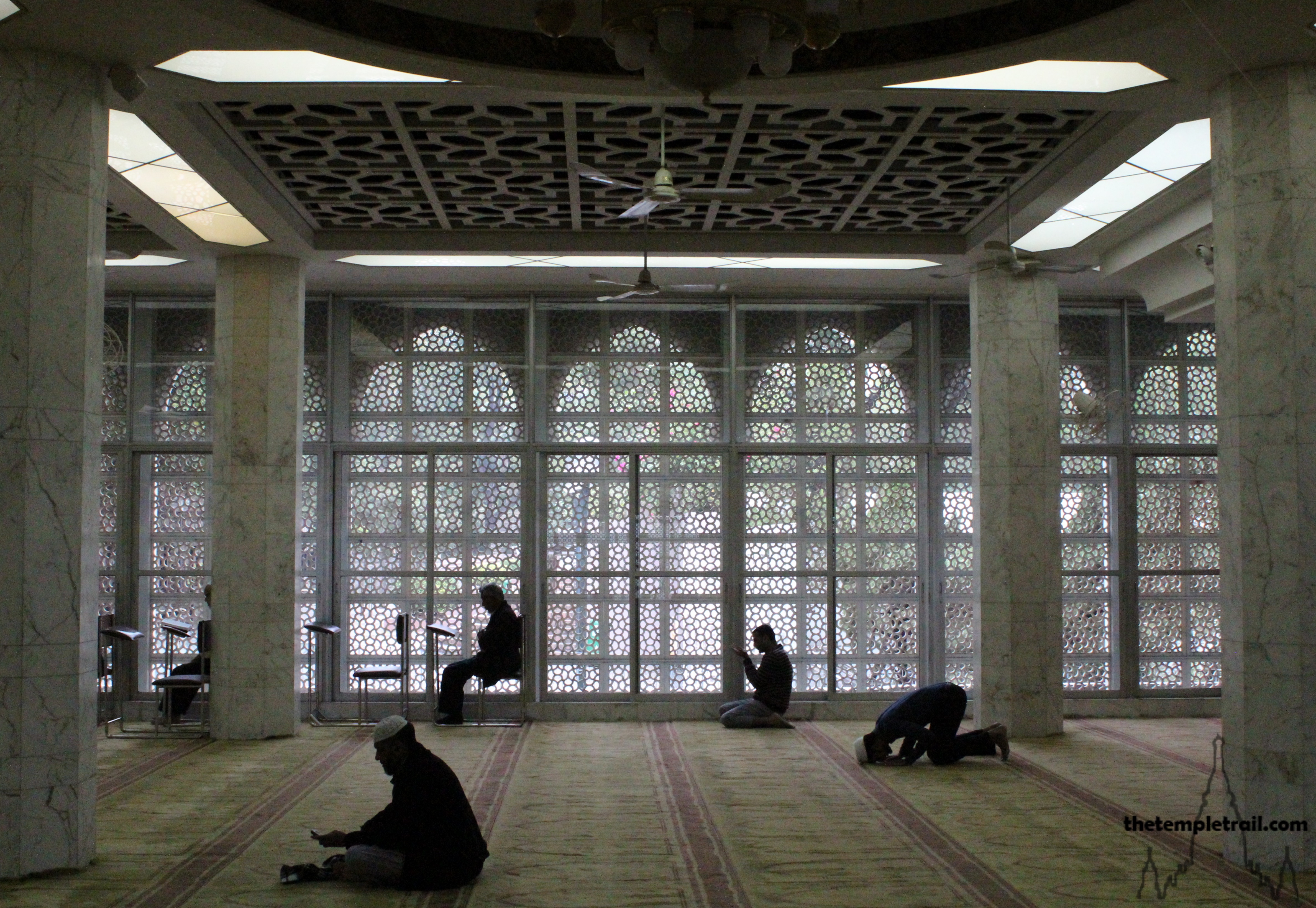The public bus from Taipa village has taken you through Cotai, a strip of land reclaimed from the sea that now connects the Macanese islands of Taipa and Coloane. The casinos jut out of the flat surface obscuring the view that was once available between the two land masses. Passing the towering modern buildings, the bus soon breaks free and begins making its way around the southern island of Coloane. As the bus passed through forested areas and along the west coast of Macau’s southernmost section, you are transported to an older place. The new casinos could not be further away as the verdant landscape washed them from your mind. Before long, the bus drops you at the bottom of the island, before making its way up the opposing shoreline. Not much has changed in the little village of Coloane over the last few centuries and its quiet atmosphere puts you at ease as you head toward the famous Lord Stowe bakery for its world-renowned egg tarts.
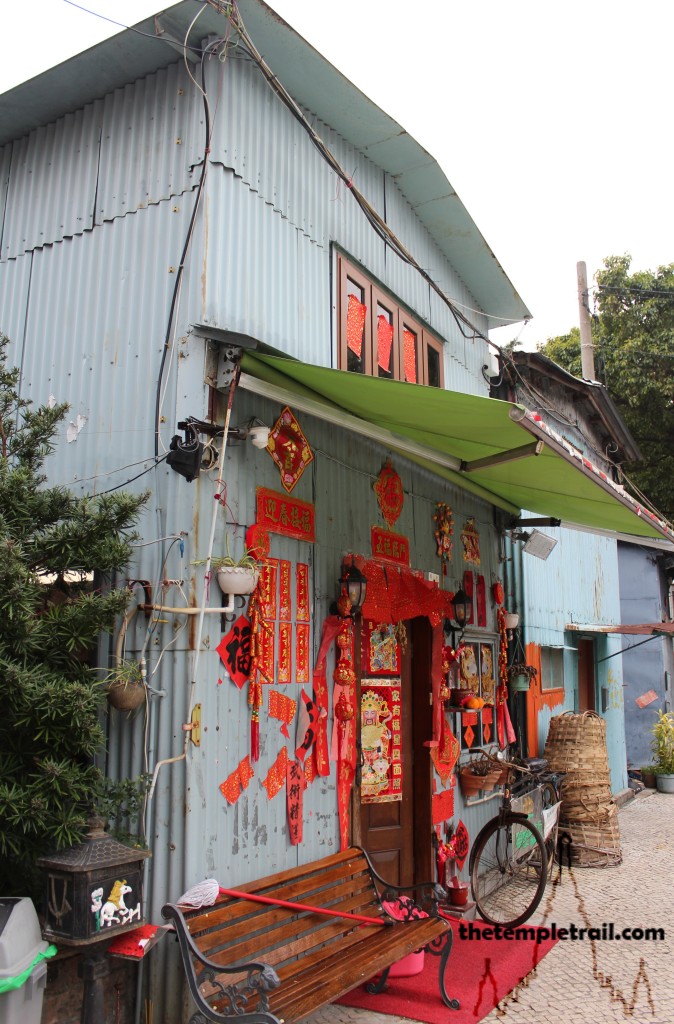
The hot, creamy, flaky delicacies warm your belly as you walk through the drizzle to your first port of call in the coastal village. Your stroll takes you past corrugated iron houses covered in magical paper talismans. The island, originally a salt producing region, was uninhabited when the Portuguese arrived in 1864. Until 1910, it was a pirate base, so much of what you see is from the 20th century. Soon enough, you come to a small temple from sometime prior to 1865. The age of the temple is indicated by the fact that the rhyming couplets (對聯 duì lián) on its front refer to Coloane by its old name of ‘Salty Bay’. Sam Seng Kung (三聖宮 Sān Shèng Gōng – Three Saint Palace), is a temple dedicated to Kam Fa (金花 Jīn Huā), the Golden Flower Goddess, Kun Iam (觀音 Guānyīn), the Goddess of Mercy and Va Kuong (花光 Huá Guāng), the God of Fire.
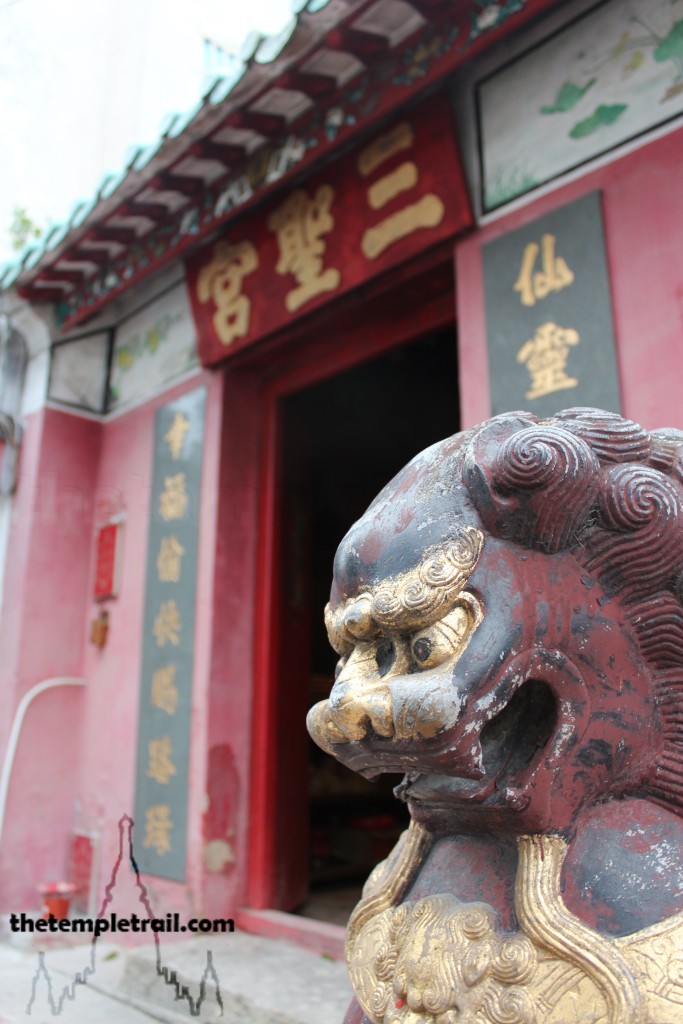
Entering the tiny space, you see the altar in the middle of the room. In the centre is Kun Iam, but the two golden statues just in front are just as important. Kun Iam, the Goddess of Mercy is popular all over the Chinese sphere of influence and is revered by Buddhists and Taoists alike. The golden statue on the right is Va Kuong. Also known as Yi Long Shing (二郎神 Èr Láng Shén), he is a god with many different stories and roles, but the ‘Second Son God’ is represented here as the ‘Great Emperor of Flowering Brightness’ and nephew of the Jade Emperor. The most important figure here is Kam Fa. The golden statue of the goddess is the most adored. It is said that local fishermen installed a statue of the goddess here more than 200 years ago and that, as she could provide families with children, her reputation grew. In her role as patroness of children and expecting mothers, she is widely worshipped. The little temple is sometimes referred to as the Kam Fa Temple, a testament to how important this southern Chinese goddess is.
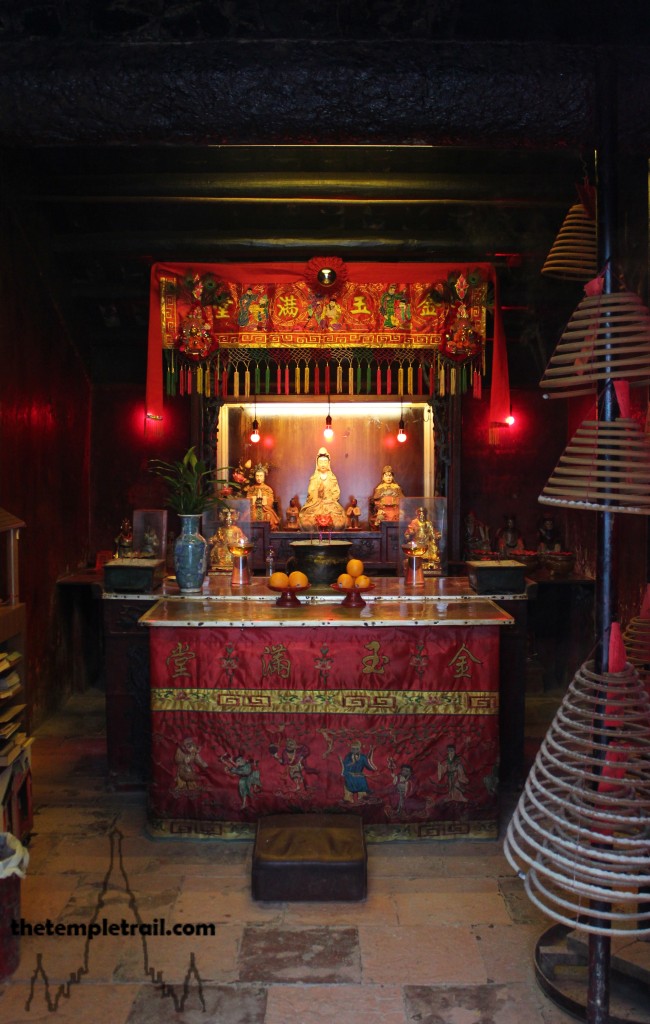
Leaving the temple, you backtrack to the centre of the village. Here you find a monument to the Portuguese victory over the pirates who once called the island home. Behind it is the small Eduardo Marques Square. At the back of the square is the Chapel of St Francis Xavier. Before entering the church, you stop in one of the small restaurants on the square for lunch. After your repast of grilled sardines, chouriço and galinha à Africana (African chicken), you feel ready to continue on to the chapel.
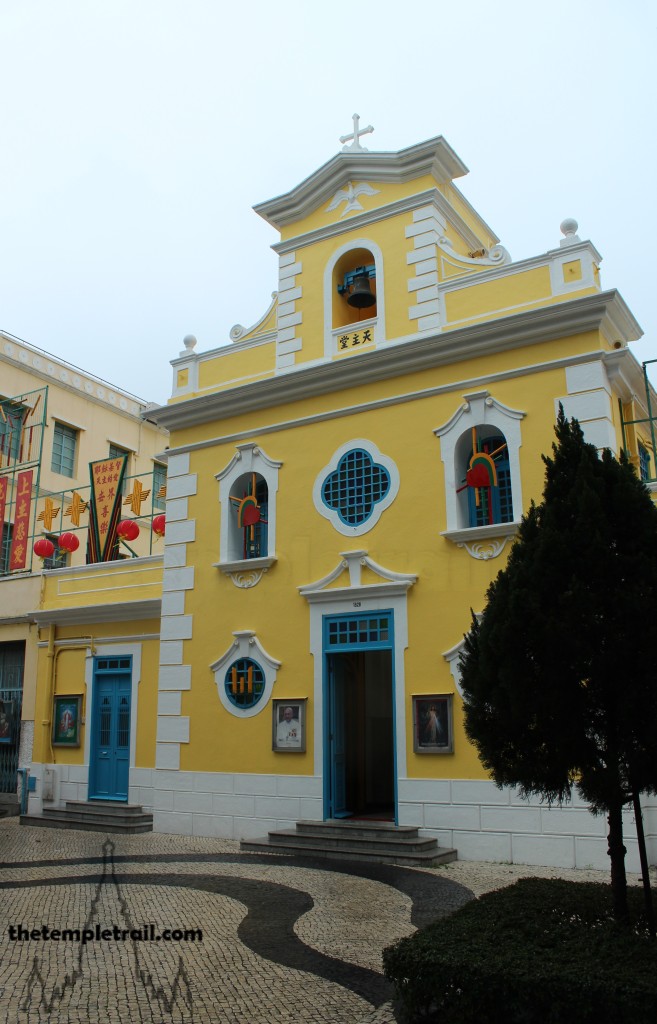
Built in 1928, the church is small, but significant. As you enter the brightly painted yellow building, you find yourself in an equally bright interior. The main apse at the end of the nave draws your attention with its blue sky mural. The chapel contains some of the most important sacred Christian relics in Asia. It houses the remains of 26 Catholic priests who were crucified in Nagasaki, Japan in 1597. The six foreign Franciscans and twenty Japanese Jesuits were executed under orders from the powerful daimyo (feudal lord) Toyotomi Hideyoshi in his suppression of Christianity. The chapel also houses the relics of Japanese Christians killed in the Shimabara Rebellion in 1637 and also some other Asian martyr remains. The little church also once held the arm bone relic of the priest who converted so many Asian Christians in the 16th century, Saint Francis Xavier.
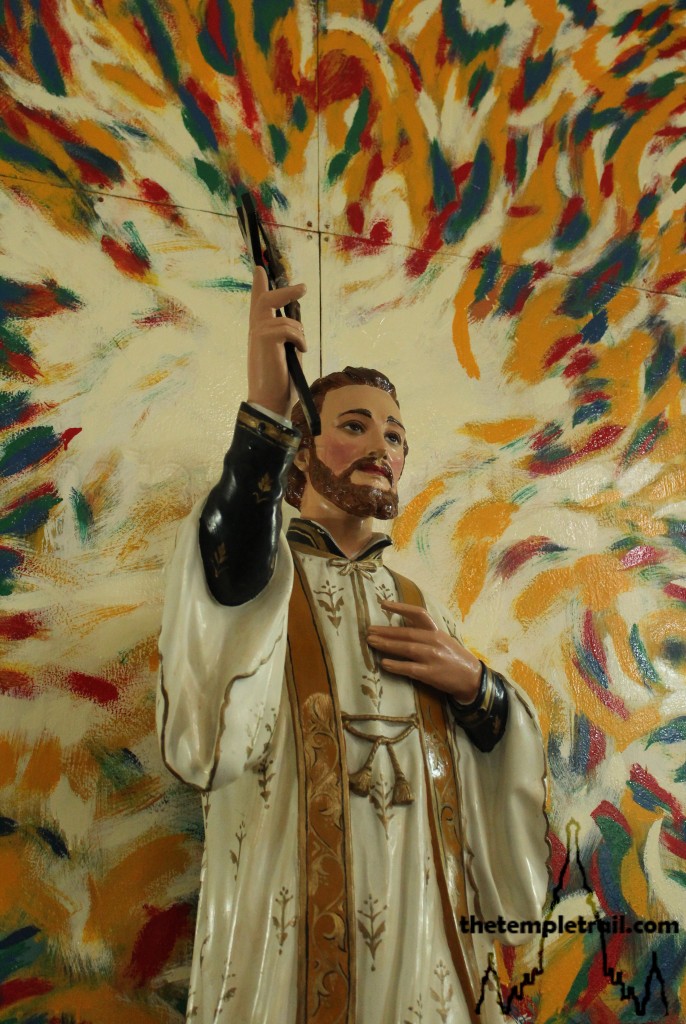
Born to an aristocratic Basque family in the Kingdom of Navarre in 1506, Francis Xavier became one of the first seven Jesuits who took their vows in Montmatre, Paris in 1534. He went on missionary work in India, Japan and the Portuguese Empire. He eventually died on Sanchuan Island (near Macau), on his way to China. His incorruptible body was taken to Portuguese Malacca, before being finally lain to rest in the Basilica of Bom Jesus, Goa. In 1614, the important Jesuit priest, Claudio Acquaviva, detached Xavier’s right forearm (the arm used for baptising and blessing) and sent it to the Church of the Gesù in Rome. Another arm bone was sent to Macau, where it was meant to stop on its way to Japan. Due to the persecution of Christians in Japan, it remained in, now ruined, St. Paul’s Cathedral before being moved to the Chapel of St. Xavier. It was finally relocated to St. Joseph’s Seminary on the peninsula in 1978.
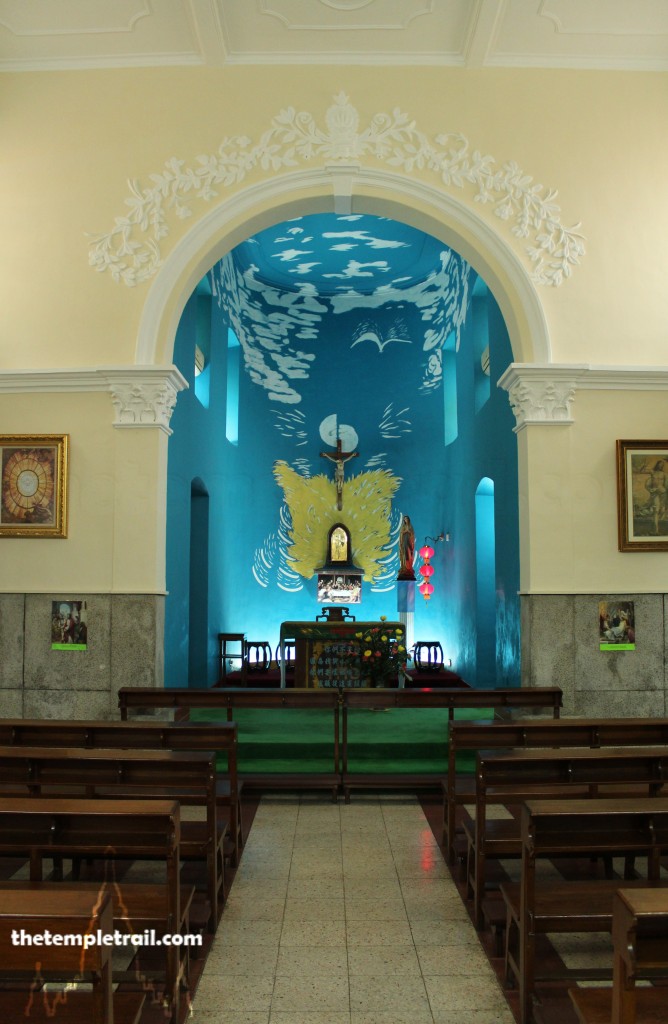
The colourful chapel is full of imagery and wandering through it you find yourself admiring the murals. The vibrant colours do not reflect the more sedate painting traditions of the European churches. Exiting the chapel, you go back out to the main road and walk along the coast. After a few minutes, you see a red temple at the road’s terminus. As the sea breeze whips salty air through your hair, you edge closer to the building. This is the most important temple in Coloane and it is one of only a few in the world dedicated to the god. The clouds of joss smoke show that it is very much an active place of worship. Appropriately on the seafront, Tam Sin Shing Miu (譚僊聖廟 Tán Xiān Shèng Miào) is dedicated to the sea god Tam Kung (譚公 Tán Gōng).
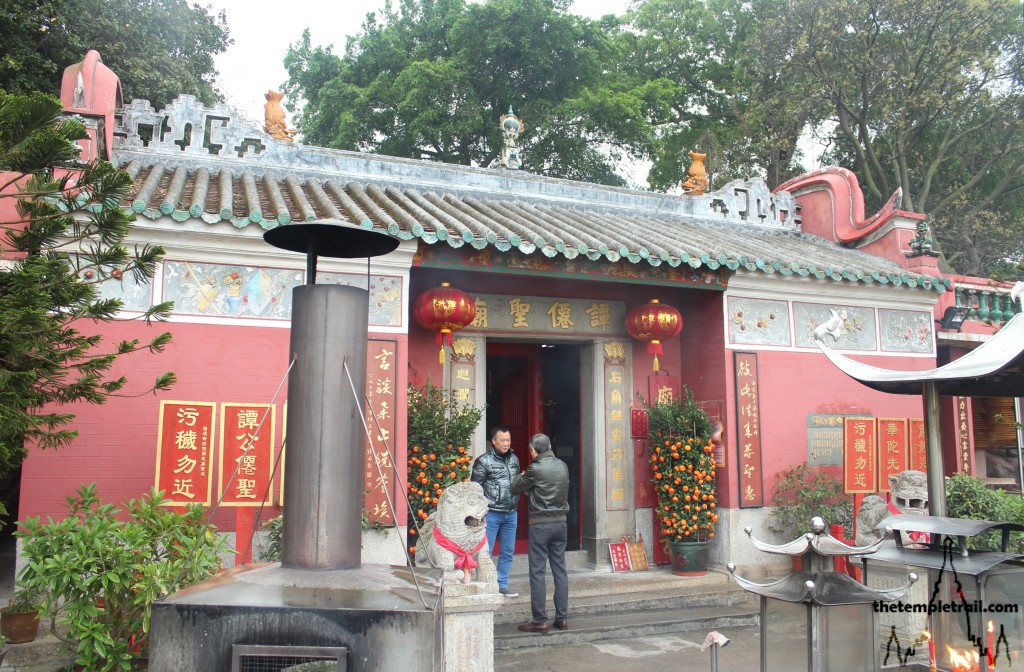
Older than either Tam Kung Temple in Hong Kong, it was built in 1862 to worship the child god. The deity may have his historical origins in Emperor Bing of Song (宋帝昺 Sòng Dì Bǐng), the last ruler of the dynasty, but popular local belief states that he was an immortal from Huizhou, Guangdong. The story says that when he was a child he could cure the sick. Various stories tell of different ages, but they agree that as a young man he became an immortal at Nine Dragon Peak (九龍山 Jiǔ Lóng Shān) in Huizhou. He could throw a cup of peas into the air to stop storms, or throw water to start rain. He is said to have lived until old age, but maintained the face of a 12 year old and wandered the mountains with a tiger carrying his possessions. The link to the boy emperors of the Song Dynasty (960 – 1279 CE) is based on the name Kowloon and the “Terrace of the Song Kings” rock carving from that time. When the two remaining heirs of the Song Dynasty fled the Mongol invasion, Emperor Duanzong (宋端宗 Sòng Duānzōng), the elder brother of Bing counted the hills of what is now Kowloon in Hong Kong. He counted eight ‘dragons’ and an advisor then told him that he was the ninth (being the emperor), hence Gau Lung (九龍 Jiǔ Lóng – nine dragons), corrupted to Kowloon by the British. Whichever is true, the Nine Dragons seem to be a pivotal point of the Tam Kung origin story. His devotees say that he appears to fishermen in the form of a child to cure their ills and predict the weather. He has been worshipped as a sea deity since he started appearing to the fishermen. Another link to Emperor Bing is that his bodyguard grabbed the eight year old ruler and jumped off a cliff into the sea in Yamen, about 30 kilometres west of Macau, committing suicide rather than being captured by the Mongols.
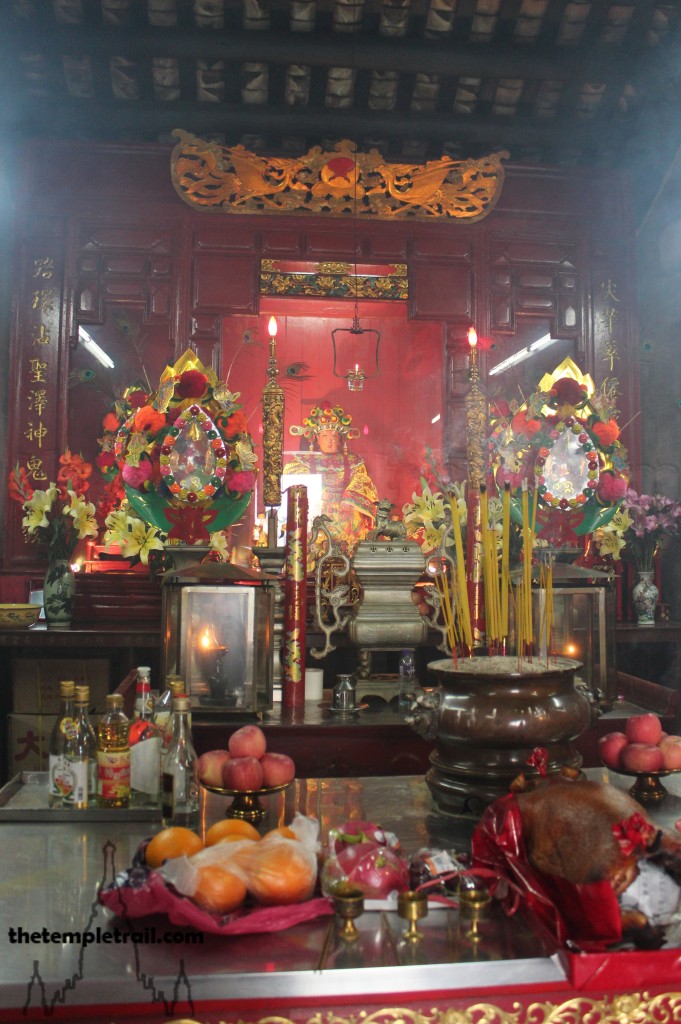
The Smoky building draws you in and your eyes fight to adjust to the darker interior amid the onslaught of burning joss. The well-appointed and finely decorated temple is one of the most beautiful in Macau. Ahead of you, directly in the centre of the main chamber, is the youthful statue of Tam Kung. The boy god looks out at you and his various possessions and offerings. On the table before the altar, someone has made a large offering of a whole roast suckling pig. This gift to the god is said to guarantee successful prayers. You see the famous dragon boat of the temple also. Made of a single whale bone that was brought to the site by fishermen before the construction of the temple. It was carved into a boat and has a little wooden crew with yellow hats. A mural of a wide-eyed tiger and cub amid rocks and twisted pines is also a famed feature of the temple. Tam Kung is said to have a tiger as a companion and protector.
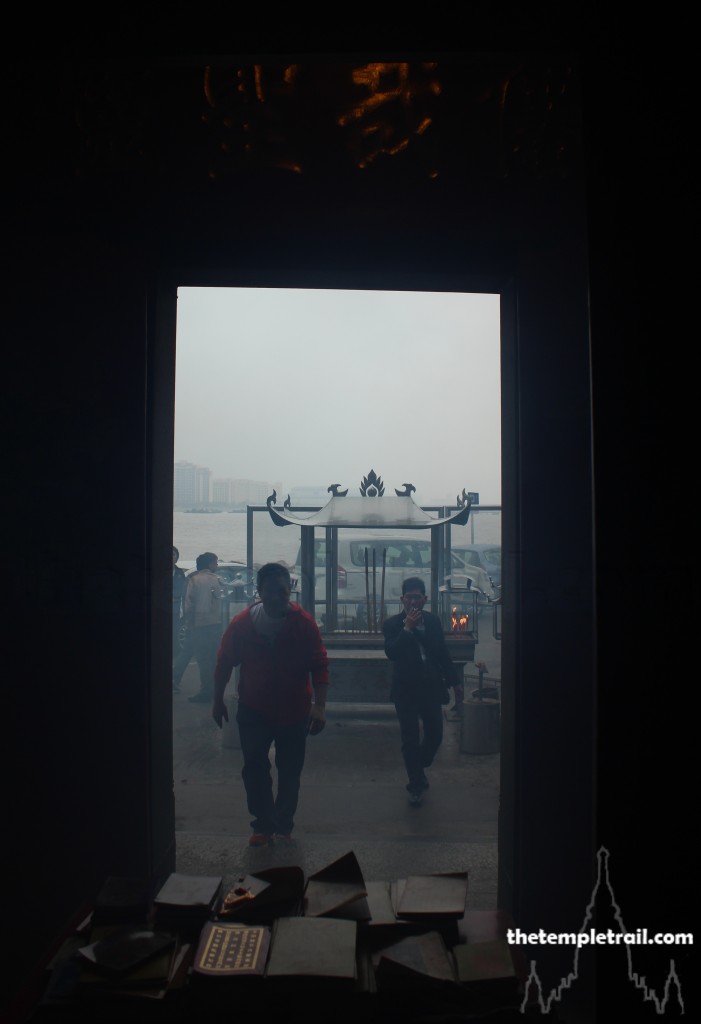
In the hall, you also find a bronze spouting bowl. The water-filled basin has two handles that you rub to create a vibration through the bowl. Wetting your hands from the water in the bowl, you emulate what Chinese people have done as a meditational aid since at least the Han Dynasty (206 BCE – 220 CE). The bowl resists a little, as people have thrown coins in for luck, covering the dragons on the bottom. After a few moments, the vessel begins to sing and the water starts forming patterns and jumping with the vibrational resonance. Once you stop and the water settles, the calm surface once more reflects the eaves of the temple. After your exertion, you step out from the temple and past an Earth God shrine to begin your circle back towards the bus stop.

The back road of the village brings you to the oldest and biggest temple in Coloane, the Ancient Temple of Tin Hau (天后古廟 Tiān Hòu Gǔ Miào). Built before 1763 (perhaps earlier in 1677), Tin Hau Gu Miu is older than the village itself. The style is grand and reflects that of the more important temples in Hong Kong and Macau. Walking up the stairs of the hillock on which it sits, you cross the forecourt and enter through the stone doorway. Passing the spirit screen door and To Dei Kung (土地公 Tǔ Dì Gōng), the Earth God, you find that inside the space is bright as the central court is open to the elements. Lined up in the centre, three painted stones in the traditional boat shape of a tael of gold rest before the main central altar. These are called zau zau (酒舟 jiǔ zhōu), or wine boats. The three vessels are carved with dragons and carp and are used for receiving alcohol offerings to the gods. The high status of the temple is clear, as normally a temple has only one and the connection to the sea can been seen by the representations of dragons, sea protection spirits.
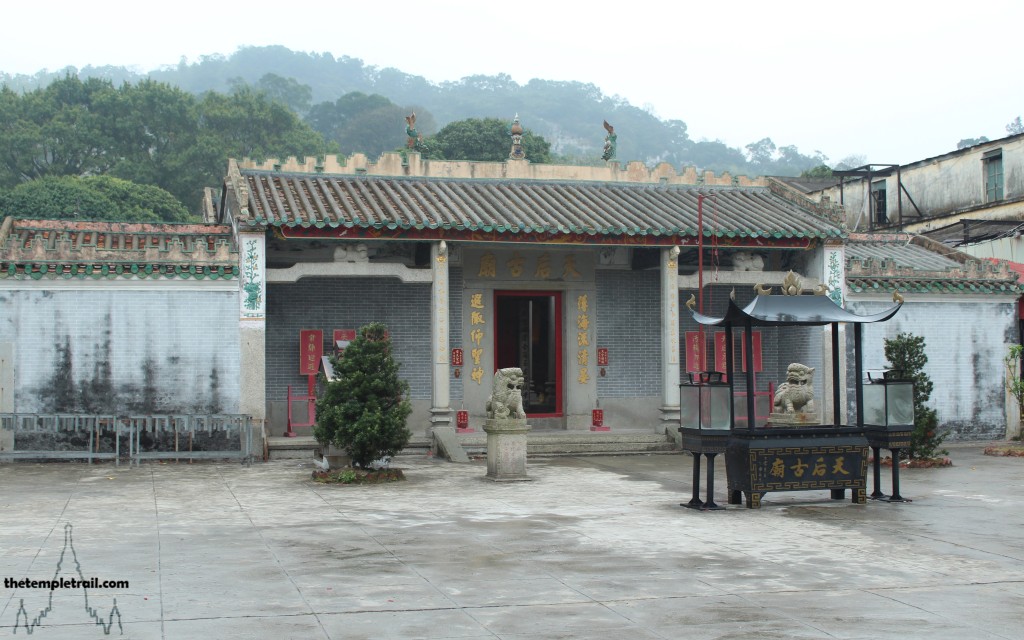
From her altar, Tin Hau (天后 Tiān Hòu) looks out at the offering containers. Walking into the central hall, you visit the goddess. She is a sea goddess and the Empress of Heaven. Born on Meizhou Island in Fujian Province a thousand years ago, she had magical powers and looked after sailors. She became an immortal and flew to heaven aged 27. Over the years her heavenly rank got higher until she was given the highest honour of Empress of Heaven during the Qing Dynasty (1644 – 1912). The unusual thing about this temple, is that Tin Hau is not accompanied by her two demonic attendants as she normally is. The goddess sits alone on her throne, serenely smiling out at those who visit her.
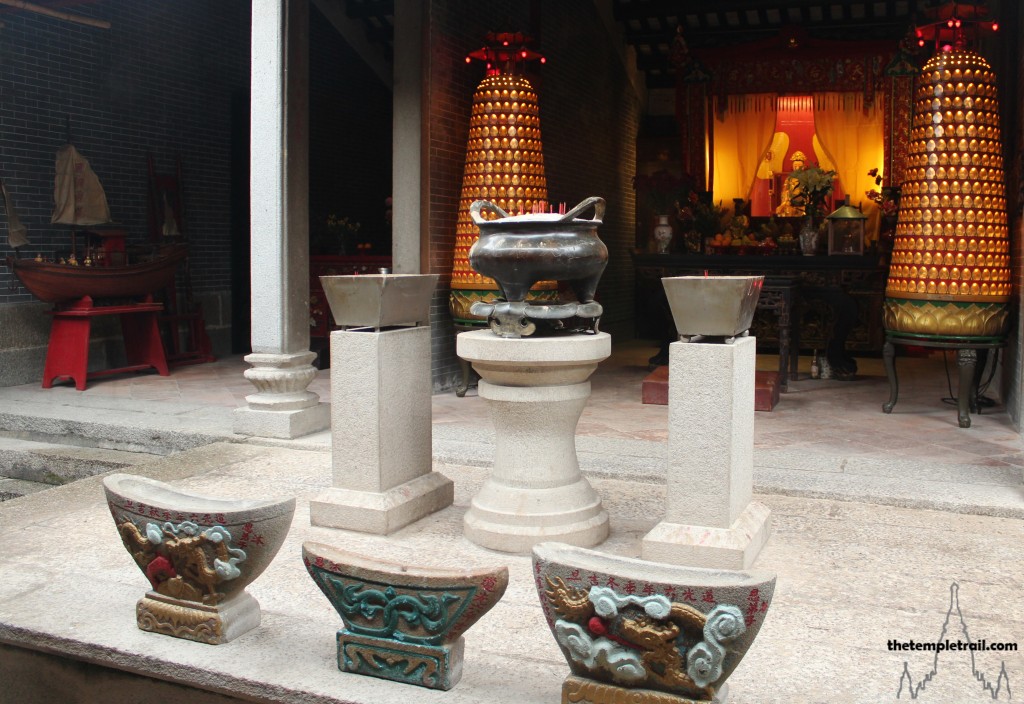
You pay respects to the goddess and then visit the halls on either side of hers. The hall on the left house three gods. The trio all have different powers and roles. On the left is Wah Tor (華佗 Huà Tuó), a god of medicine who was a famous physician during the Eastern Han Dynasty (23 – 220 CE). In the centre is Choi Bak Sing Gwan (財帛星君 Cái Bó Xīng Jūn), the main Chinese God of Wealth and on the right is Lo Pan (魯班 Lǔ Bān), the God of Builders. The hall also houses a well-made model wooden junk boat.
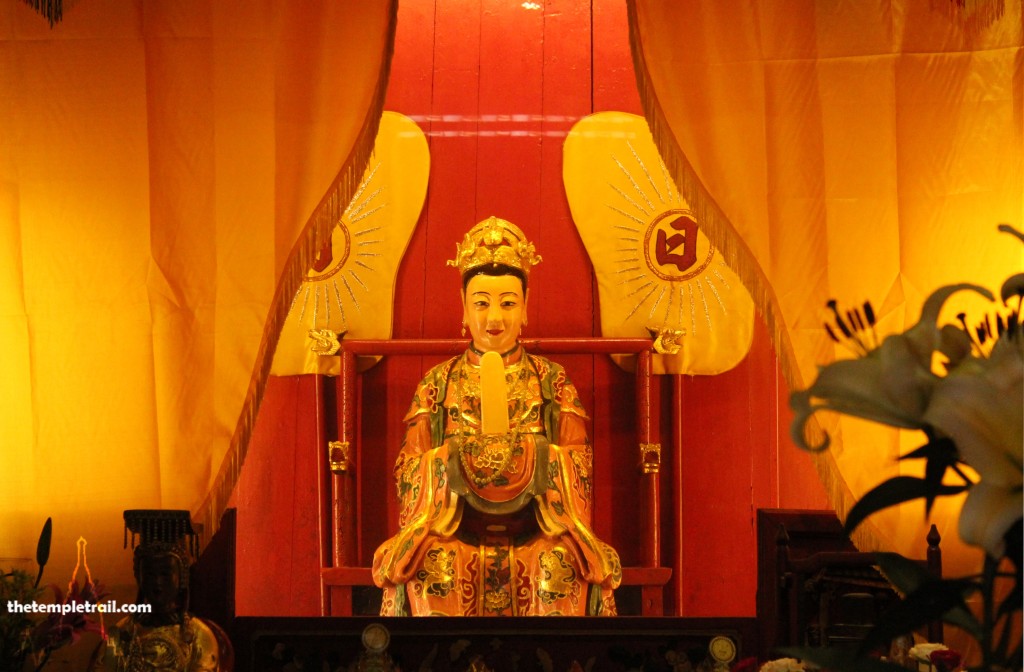
Walking to the other side of the temple, you note that the hall on the right holds a whale bone and a bell. The bell is dated to 1763, thereby giving the latest possible construction date for the temple. The hall also has three more gods. On the right, Choi Bak Sing Gwan can be found once more, but he is accompanied by two different gods this time. On the left is Se Jik Tai Wong (社稷 Shè Jì), the compound God of Earth and Grain. In ancient times, emperors worshipped only the soil, but over time, both soil and grain were worshipped in rituals conducted by the emperor. Blood sacrifice was made to the creators of grains and life. In the centre is Kuan Seng Dai Gwan (關聖帝君 Guān Shèng Dì Jūn), the God of War and deified Three Kingdoms Period (220 – 280 CE) general Guān Yǔ (關羽). He is depicted without his normal red face, but his stern countenance is undeniable.
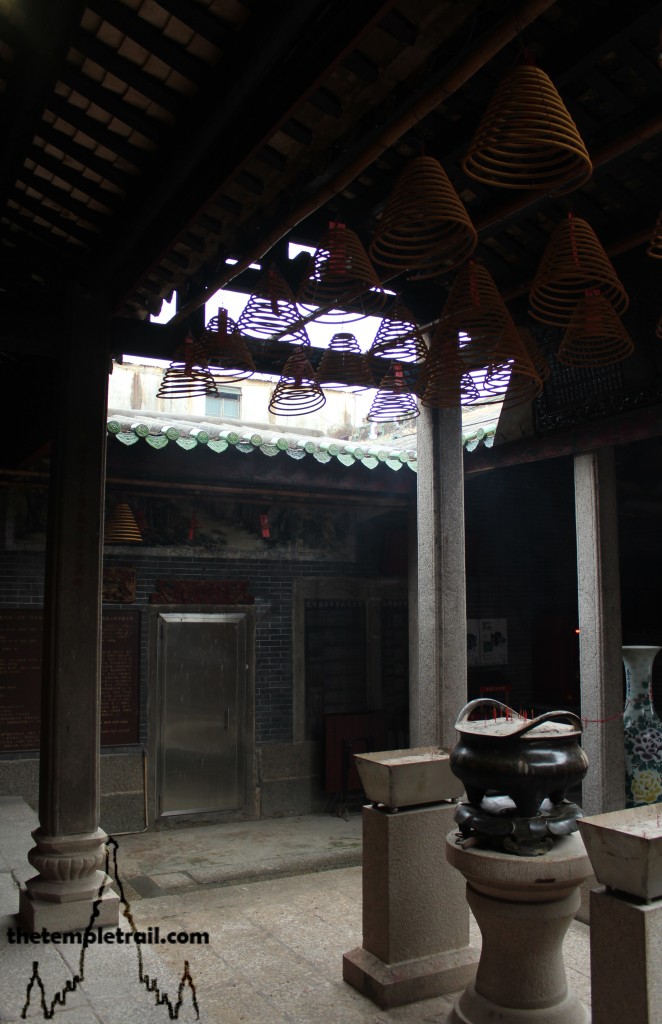
Leaving the array of gods behind you, you descend the steps and continue back to the bus stop. On your way you briefly stop by the small Kun Iam Temple built in 1800, but then quickly continue on to complete your circle. As you walk past another branch of Lord Stowe Bakery, you are sorely tempted to eat another, but decide against it and wait for the bus back to central Macau. As you sit at the bus stop, you think about the deep culture in Coloane. While it is clearly Chinese, it has a strong influence of Portuguese. Next to you, two old men speak in the local creole. The mixture of Cantonese and Portuguese is unique and reflects the wider cultural heritage of the region. Jumping on the bus as it arrives, you look back at the quiet little seaside village disappearing from view behind you. Ahead of you is modern Macau with its bright lights, casinos and colonial architecture.
